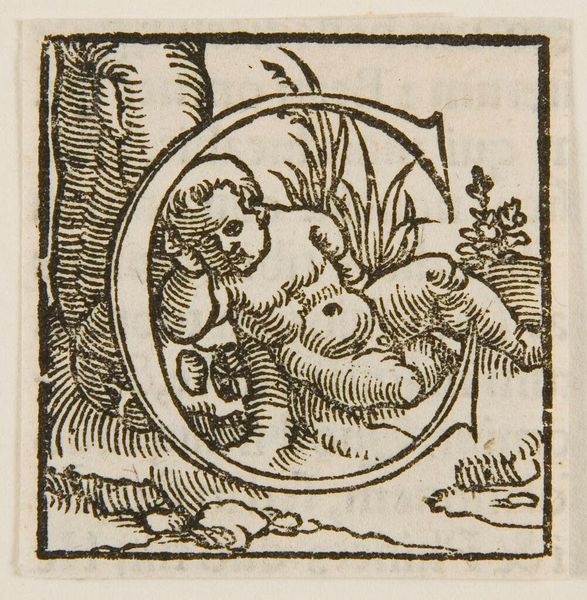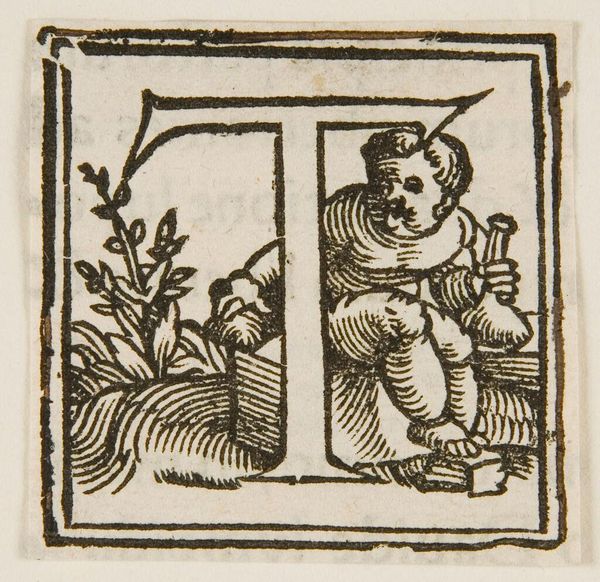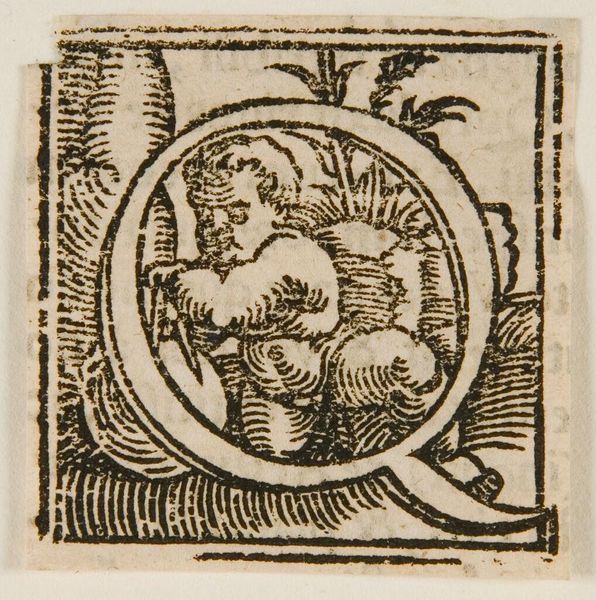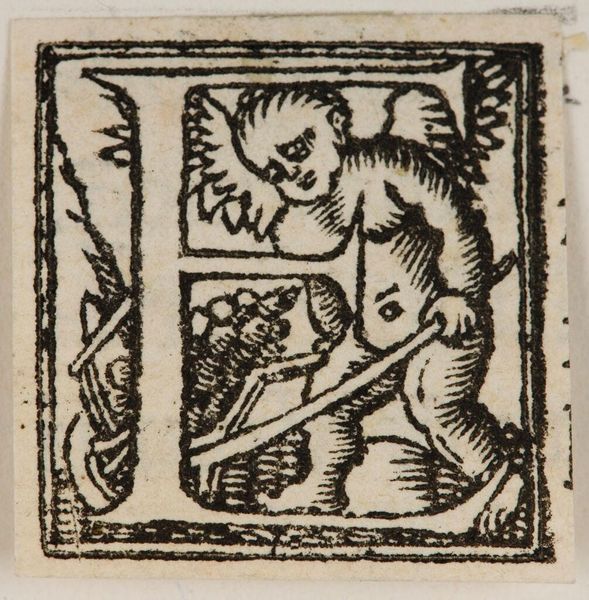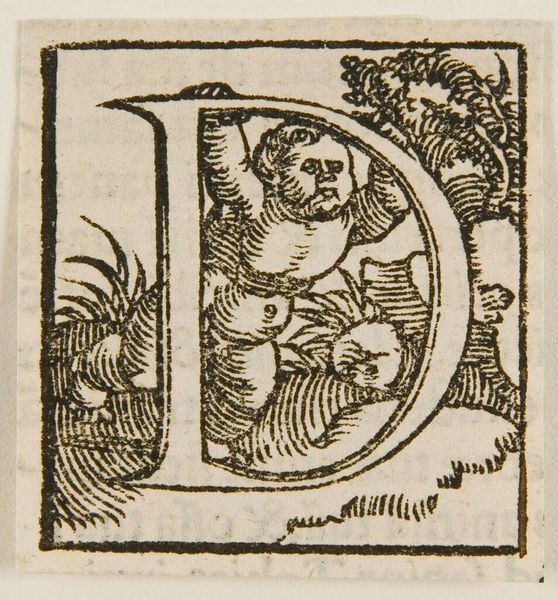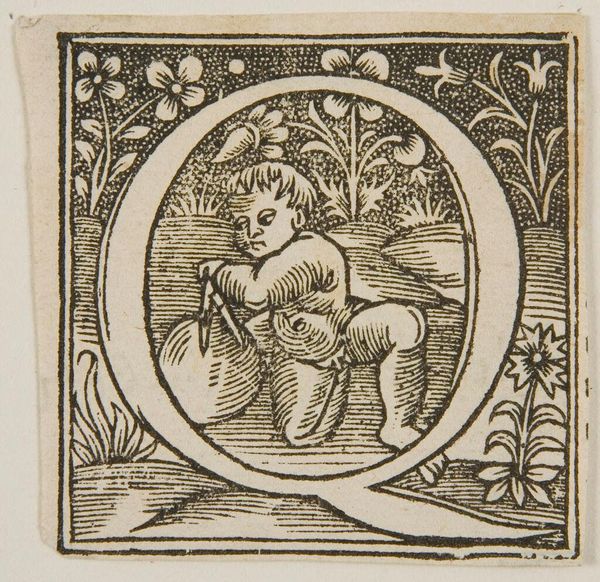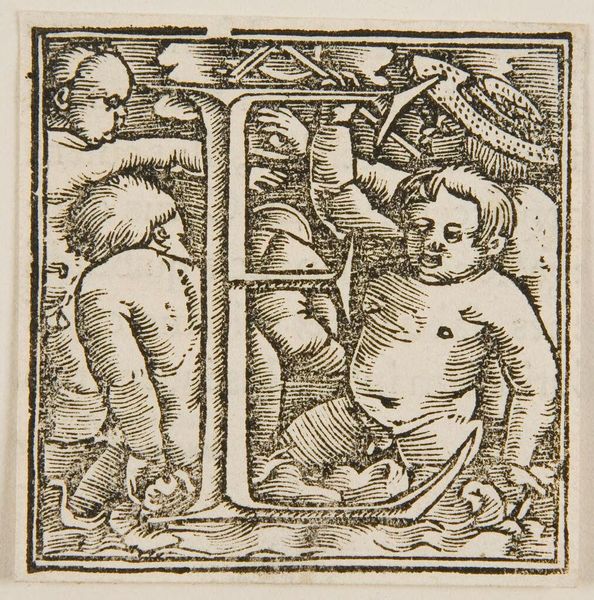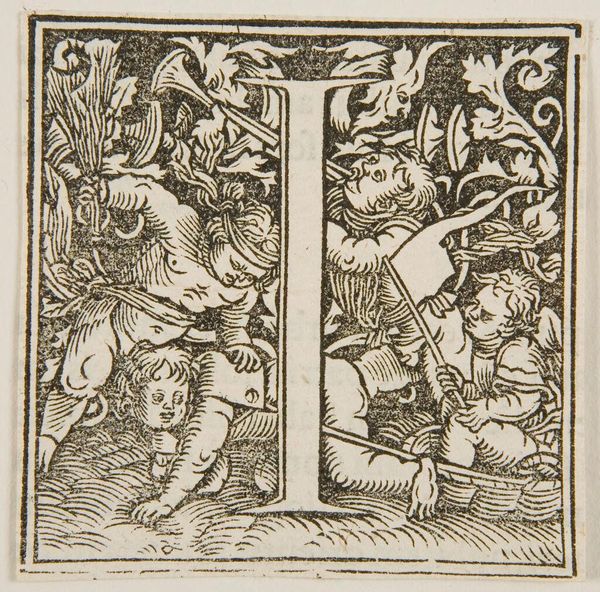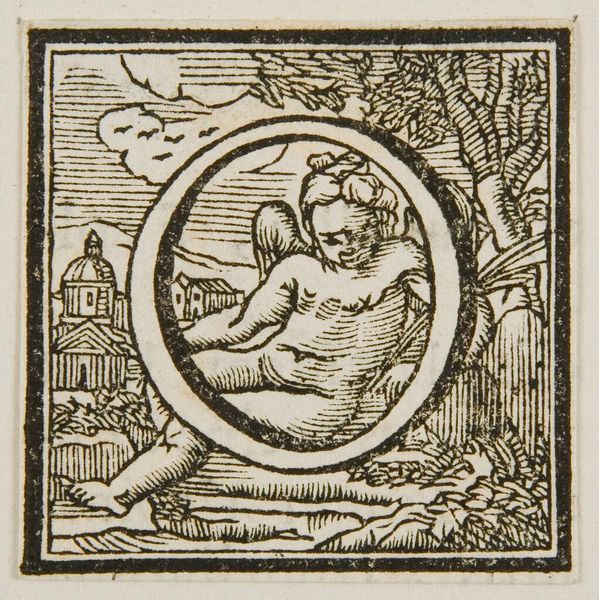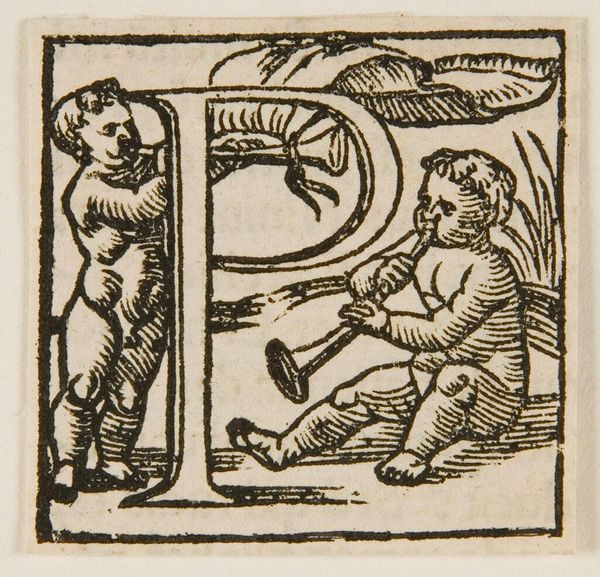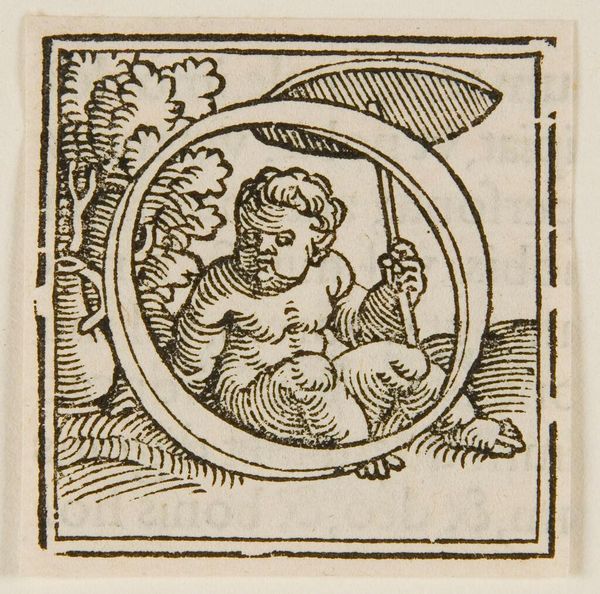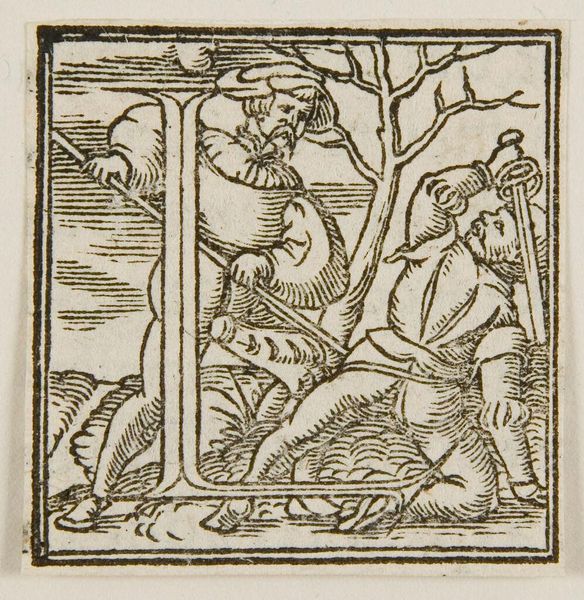
Copyright: CC0 1.0
Curator: Here we have Hans Holbein the Younger’s “Letter pi,” housed at the Harvard Art Museums. Editor: Immediately, I'm struck by the density of the imagery. It's a playful and rich visual field contained within a tight, defined border. Curator: As a woodcut, its stark contrast is inherent to the labor. Look at how the negative space is carved away, leaving the image raised to meet the ink. This piece is a testament to the meticulous craftsmanship of printmaking in the 16th century. Editor: The symbol of the child riding the goat, surrounded by grapes, evokes Bacchanalian revelry, a celebration of fertility and abundance, perhaps signaling a deeper connection to classical mythology. Curator: Certainly, and consider the context: printed letters became commodities, part of a growing industry that shaped literacy and communication. Editor: So, beyond the grapes representing abundance, what is being shared or spread? What knowledge is being put into our hands? Curator: A fascinating question that circles back to the material conditions of this piece. Editor: This small, captivating image truly speaks volumes.
Comments
No comments
Be the first to comment and join the conversation on the ultimate creative platform.
